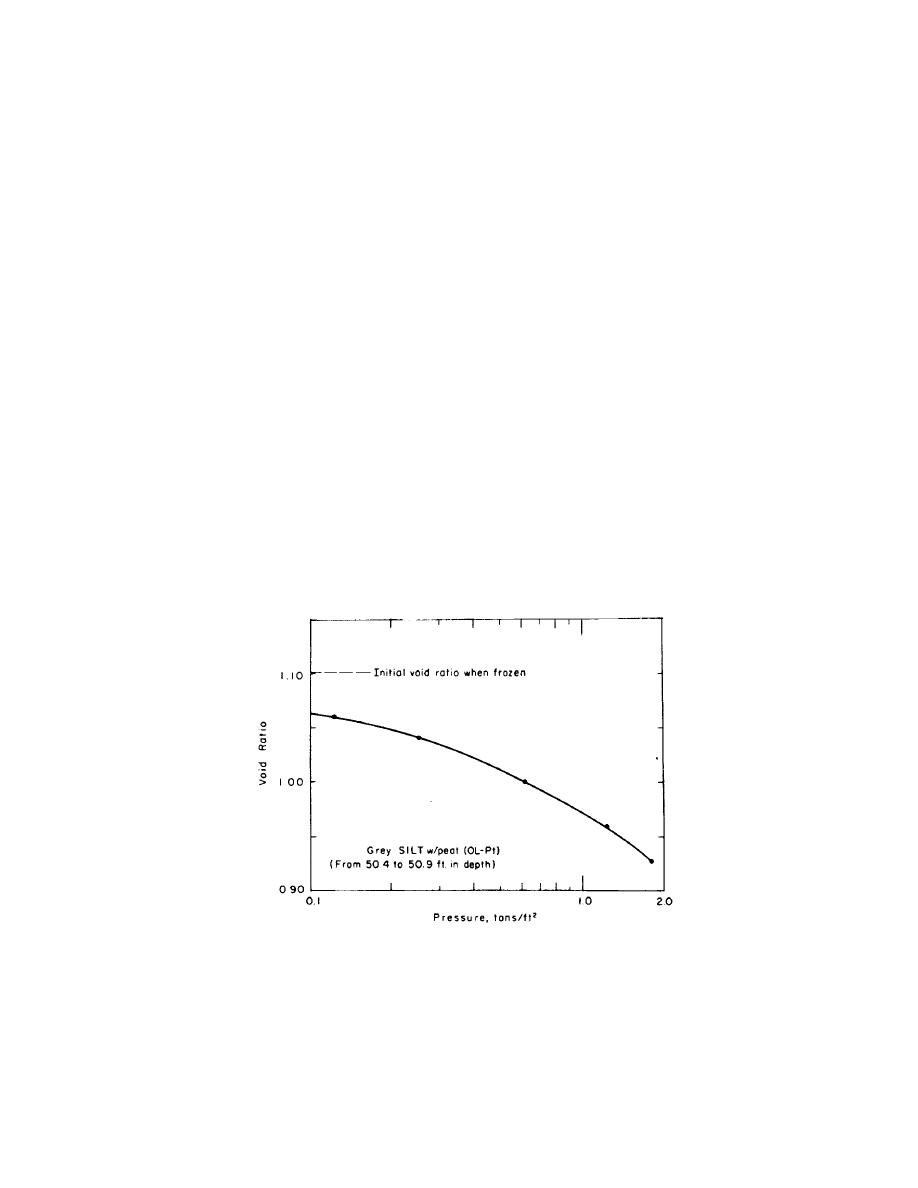
TM 5-852-4/AFM 88-19, Chap. 4
crements of load are then applied in accordance with
be measured when thaw is complete and again after
conventional test procedures to develop plots of
completion of each successive consolidation pressure
pressure versus void ratio as illustrated in figure 3-4 or
increment which can then be effected under external
pressure versus settlement strain as illustrated by figure
pressure. The resulting volume change information may
3-5 to encompass the stress level which may be
be taken as indicative of the amount of settlement which
expected in the foundation. The amount of settlement
will occur on thaw. The lump method is not suitable for
which may be expected at the level in the foundation
depth-time rates of consolidation as the lengths of
represented by the specimen may then be computed
drainage paths are indeterminate. The results may also
from the volume change information. Note in figure 3-5b
involve some error from the fact that the consolidation
that the initial compressions of samples which are
effected is not unidirectional nor related to foundation
thawed after application of the initial load were much
strata in the same manner as in the actual foundation.
more than for the samples thawed prior to application of
However, since a large portion of the consolidation may
commonly be that resulting from the thaw of ice, as
the initial load.
Where time-rate of consolidation
information is needed it can be computed from the
illustrated in figure 3-5, the test may be a quite useful
indicator.
individual incremental compression versus time records.
(1) As an expedient method to obtain a
(2) From plots of soil density with depth
and with addition of structure load stresses, the
measure of the volume reduction which may occur on
relationship of intergranular pressure with depth for the
thawing of materials which cannot conveniently be
design condition should be established as illustrated in
trimmed to fit into a standard consolidometer, a lump of
figure 3-6. Using this information and the pressure
the frozen material may be placed into a bag of thin
versus void ratio or pressure versus settlement strain
rubber together with a length of tubing attached to a
consolidation data, and cumulatively summing the
porous stone or other drainage medium.
After
amounts of settlement associated with increasing
evacuation of the rubber bag sufficient to bring it into
increments of thaw depth, curves of estimated
intimate and complete contact with the frozen soil, the
settlement vs. depth of thaw may be estimated, as
initial volume of the bag and sample should be
illustrated in figure 3-7 and table 3-1 for individual
determined. The specimen should then be thawed under
about 1 psi vaccuum pressure differential with drainage
locations. If the foundation materials
of the excess water permitted to occur through the
tubing. The volume change of bag plus sample should
U. S. Army Corps of Engineers
Figure 3-4. Thaw-consolidation test on undisturbed sample.
3-8



 Previous Page
Previous Page
